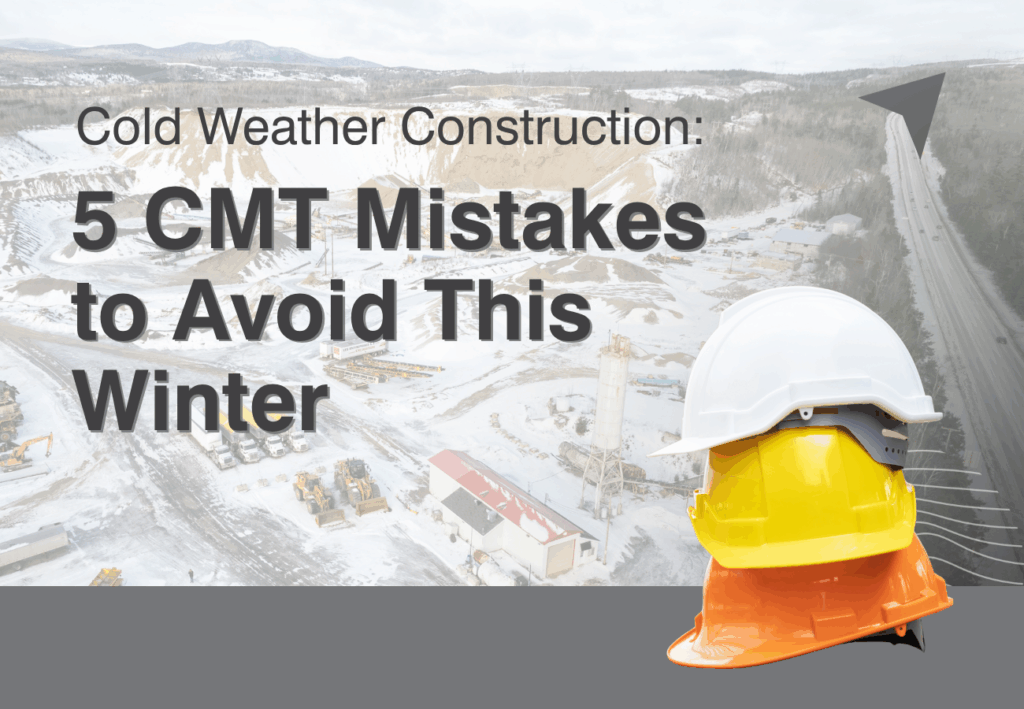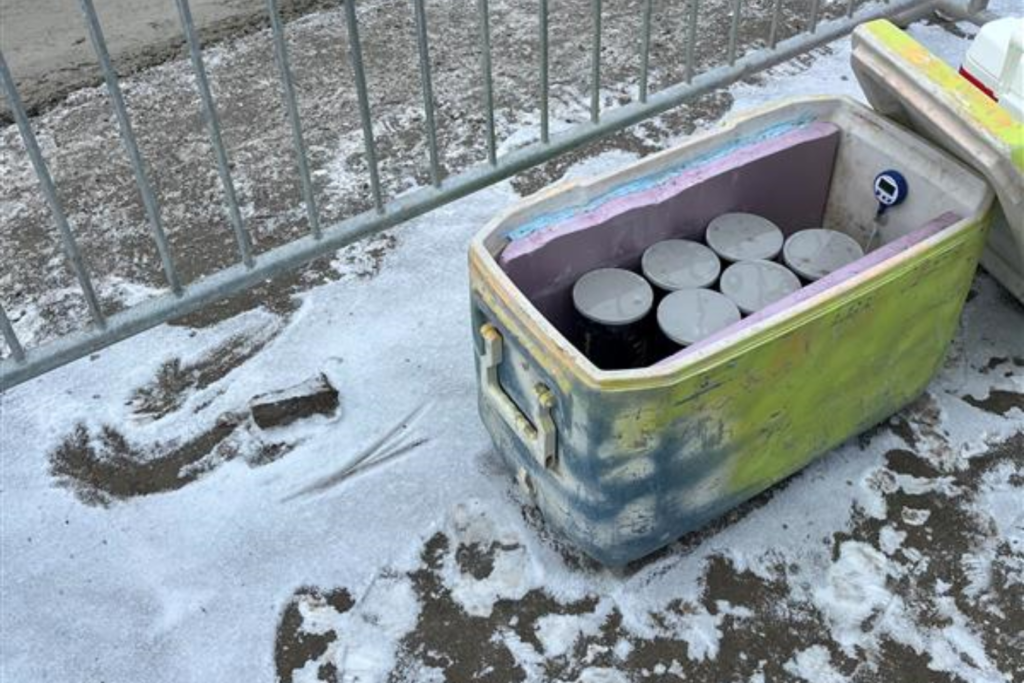
Cold Weather Construction: 5 CMT Mistakes to Avoid This Winter
Frozen ground, extreme snow, and sub-zero temperatures aren’t ideal for most Michiganders, especially those in the construction industry. With unique testing specifications and mandatory precautions, Construction Materials Testing (CMT) becomes even more critical in cold weather. A single mistake can result in weak concrete, failed inspections, and costly delays.
Winter construction is doable and often mandatory to maintain project progress. This year, avoid these five CMT mistakes to ensure your construction project maintains progress and stays on budget.
Mistake 1: Placing concrete without proper thermal protection.
When teams place concrete without proper thermal protection, the curing process slows, causing the concrete to become porous and weak. This leads to a shorter lifespan and a higher risk of cracking and spalling.
To prevent this, CMT technicians must verify that the subgrade and rebar are frost-free before placing the concrete. After placing the concrete, the team must maintain thermal protection efforts. This can be done through equipment such as blankets, insulating coolers, heated enclosures, and accelerators. American Concrete Institute (ACI) 306R-16, “Guide to Cold Weather Concrete,” provides recommended minimum temperatures for concrete placement, which depend on the concrete section’s thickness and ambient air temperature.
For example, when the air temperature is between 30°F and 40°F, ACI recommends a minimum concrete temperature of 55°F at placement for sections less than 12 inches thick. Additionally, the standard states that cold-weather procedures are required when the air temperature is expected to fall below 40°F during the protection period.
Mistake 2: Compacting frozen soil.
Frozen soil contains ice, which expands and can cause the soil to swell. This alters the material’s mass-to-volume relationship, resulting in inaccurate density readings. Because this yields invalid results, the ASTM D698/D1557 prohibits the compaction of frozen soils.
Additionally, the American Association of State Highway and Transportation Officials (AASHTO) T99.T180 and Michigan Department of Transportation (MDOT) Standard Specifications emphasize strict moisture and temperature controls during placement. Following these standards ensures that testing is performed with quality and accuracy.
Mistake 3: Ignoring masonry temperature requirements.
When masonry temperature requirements are ignored, mortar can settle improperly, resulting in a weakened final product, dangerous structural problems, and costly repairs. To prevent this, contractors must ensure masonry units are free of ice, snow, and frost before laying. ACI 530.1R: Cold Weather Masonry Construction outlines requirements for mortar, including maintaining both units and mortar at or above 40°F until adequate strength is achieved. This temperature can be maintained by protecting freshly laid masonry with enclosures, heated shelters, or insulated blankets.
Mistake 4: Not protecting testing equipment.
Failing to protect testing equipment from extreme winter conditions can lead to false readings and inaccurate testing.
CMT technicians need to plan accordingly to ensure they protect the equipment. All concrete testing equipment, especially cylinder molds, thermometers, and slump cones, should be stored in a heated area to prevent freezing. A temperature-controlled office or vehicle can be used for this purpose. This is crucial for maintaining the integrity and accuracy of test sample results.

Mistake 5: Poor documentation and coordination.
With Michigan winters’ unpredictability and construction projects’ frequent changes, poor documentation and coordination can ruin a project’s budget and schedule.
To promote cross-trade understanding and diligent precautions, CMT teams should record the following:
- Air temperatures
- Soil temperature
- Mortar/Concrete temperature
- Curing methods
- Protection methods
Clear, consistent, and reliable communication ensures all trades on site are in accordance with one another, delivering a quality product within the project’s timeline.
In the case of severe weather conditions, crews without a back-up plan will slow and even stop project progress. Establishing and coordinating a contingency plan with trades on site is essential. For example, project managers should proactively arrange to supply thermal blankets and portable heated enclosures on-site, ready to deploy at a moment’s notice. Additionally, the concrete supplier should be notified to have a mix design with an accelerating admixture on standby.
Achieving Consistent, Reliable Results: 5 Best Practices for Construction Materials Testing Technicians
Expert Construction Materials Testing (CMT) Technicians can make or break a project’s integrity. Following these five practices is crucial to the project’s success.
Don’t let winter weather freeze your project’s progress. Plan ahead and avoid these five cold-weather construction mistakes to keep your team on schedule, within compliance, and durable for the long haul.
Contact the pros.
Metro Consulting Associates’ (MCA) certified CMT professionals ensure that winter construction quality meets design specifications through comprehensive field testing and ASSHTO-accredited lab services. Our pros arrive on time and stay until completion, respecting your schedule.
Talk with an MCA CMT specialist today, and let’s ensure your project is completed correctly the first time, no matter the weather.

Stay connected!
Subscribe to News + Ideas

